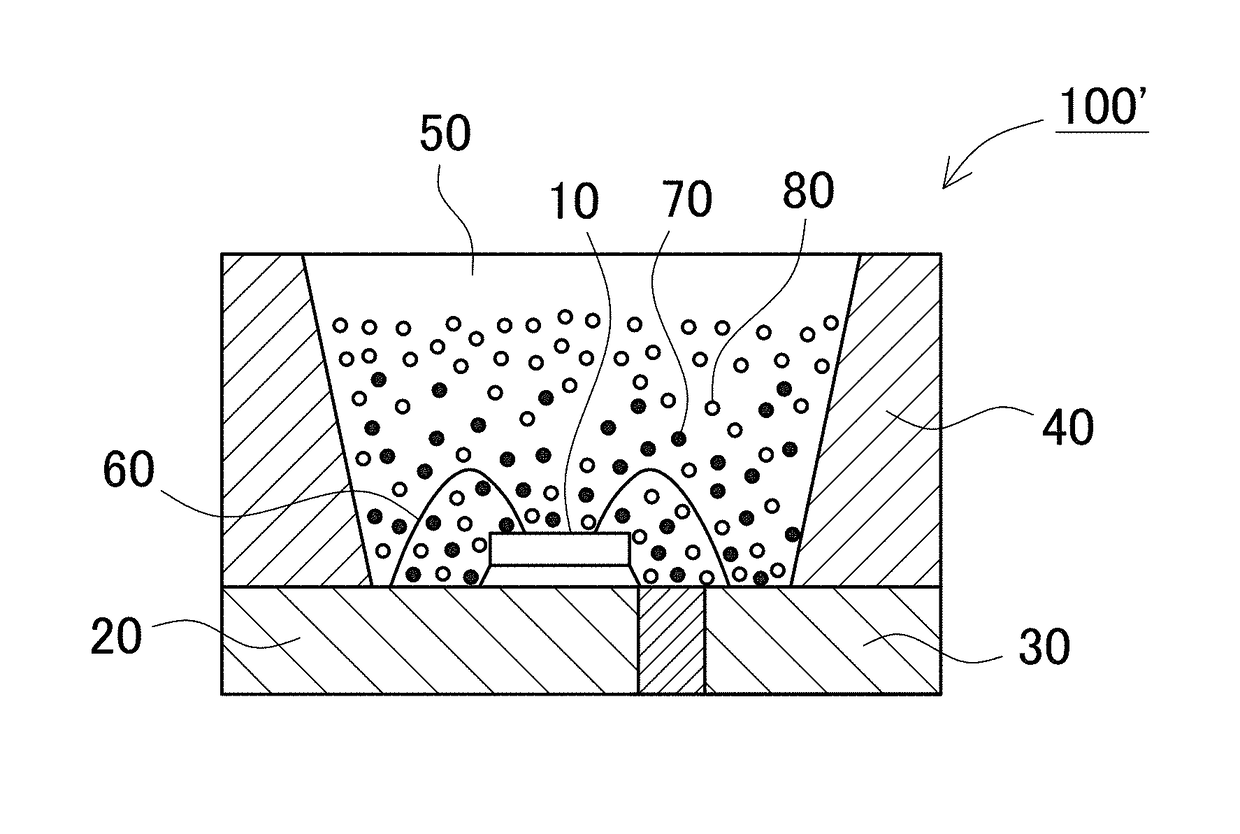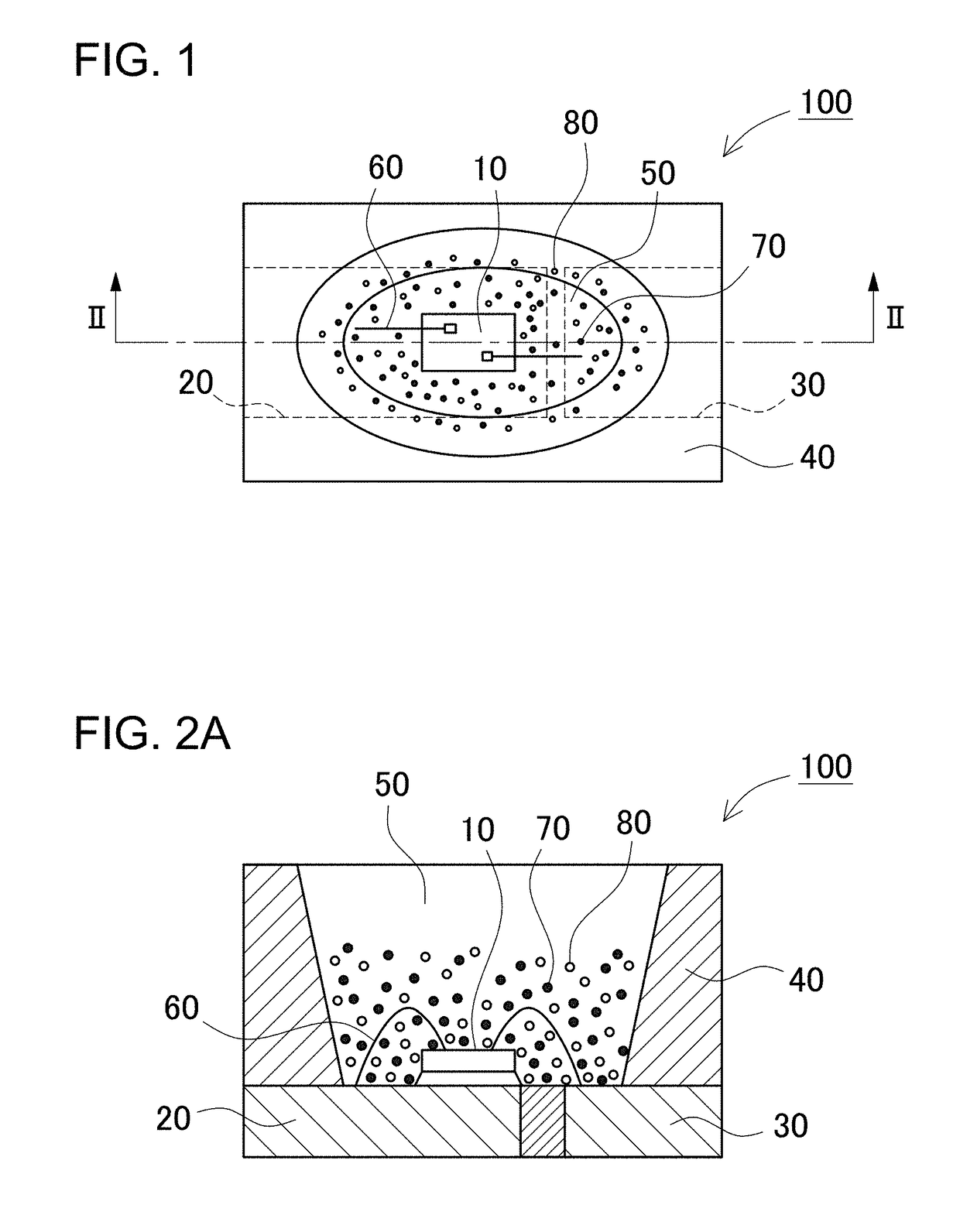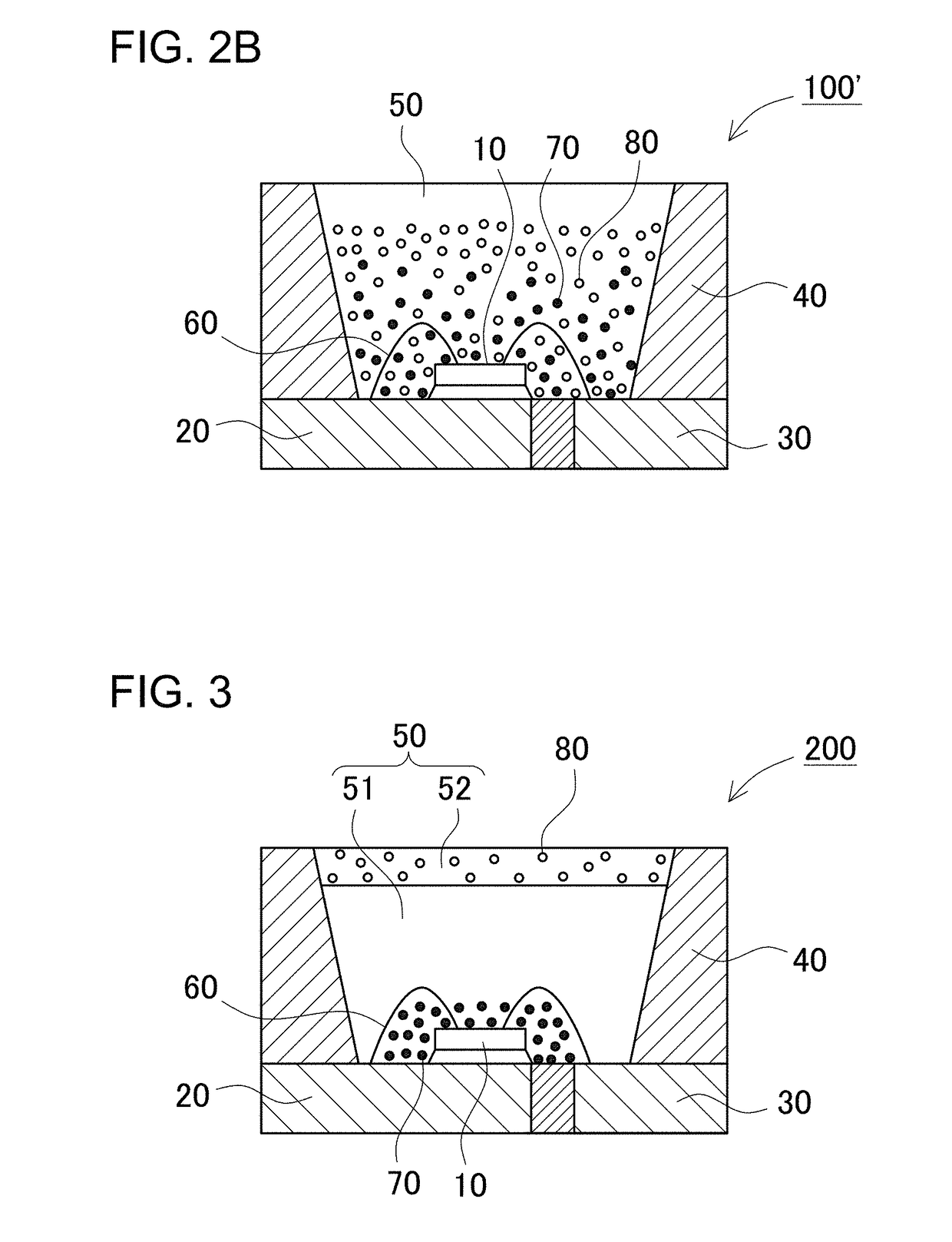Light emitting device
a technology light source, which is applied in the direction of semiconductor devices, basic electric elements, electrical apparatus, etc., can solve the problems of deterioration of light emitting device members (e.g. resin) by ultraviolet radiation, complex construction or control means of light emitting device, and high operational cost, etc., to achieve high color purity and reduce ultraviolet radiation deterioration possibility
- Summary
- Abstract
- Description
- Claims
- Application Information
AI Technical Summary
Benefits of technology
Problems solved by technology
Method used
Image
Examples
second embodiment
[0065]It has been described that the red phosphor 70 and the pigment 80 are mixed and distributed in the common sealing member 50 in the light emitting device 100 according to the first embodiment shown in FIGS. 1 and 2A. However, the present invention is not limited to this. The phosphor and the pigment can be included in separated sealing members. This type of light emitting device according to a second embodiment is shown in a cross-sectional view of FIG. 3. In the illustrated light emitting device 200, the sealing member 50 is constructed of a first sealing portion 51 which contains the phosphor 70, and a second sealing portion 52 which contains the pigment 80. In particular, it is preferable that the first sealing portion 51 covers the light emitting element 10, and the second sealing portion 52 covers the first sealing portion 51. Since the phosphor 70 and the pigment 80 are physically separated from each other, and the first sealing portion 51 which includes the phosphor 70 i...
third embodiment
[0066]The arrangement of the first and second sealing portions is not limited to the arrangement shown in FIG. 3. Various suitable arrangements can be used for the first and second sealing portions. For example, an angled part is formed on the upper part of the side wall of the molded member 40 in a light emitting device 300 according to a third embodiment shown in FIG. 4. This angled part can be easily formed by changing the inclination of the side wall. The part of the recessed part lower than the angled part is filled with the first sealing portion 51 in which the phosphor 70 is settled. The second sealing portion 52 which includes the pigment 80 is arranged on the first sealing portion 51. According to this arrangement, the second sealing portion 52 can be easily fastened to the upper part of the molded member 40, and is less likely to be removed.
fourth embodiment
[0067]The first sealing portion 51 which includes the phosphor 70 is substantially coplanar with the top surface of the side wall of the molded member 40 after the recessed part of the molded member 40 is filled with the first sealing portion 51, and the second sealing portion 52 which includes the pigment 80 is arranged on the top surfaces of the first sealing portion 51 and the side wall of the molded member 40 in a light emitting device 400 according to a fourth embodiment shown in FIG. 5.
PUM
 Login to View More
Login to View More Abstract
Description
Claims
Application Information
 Login to View More
Login to View More - R&D
- Intellectual Property
- Life Sciences
- Materials
- Tech Scout
- Unparalleled Data Quality
- Higher Quality Content
- 60% Fewer Hallucinations
Browse by: Latest US Patents, China's latest patents, Technical Efficacy Thesaurus, Application Domain, Technology Topic, Popular Technical Reports.
© 2025 PatSnap. All rights reserved.Legal|Privacy policy|Modern Slavery Act Transparency Statement|Sitemap|About US| Contact US: help@patsnap.com



